A music studio is where you, as a producer, will spend most of your time.
Whether in your home studio or a professional setup, mastering the art of music production can elevate your tracks to unparalleled heights.
However, without a grasp of basic and advanced techniques, your music could lack the finesse and nuance that set you apart.
As well as causing it to get lost in the mix.
Therefore, for today’s article, we’ll be covering:
- How to set up your home studio ✓
- Working in a professional music studio ✓
- Mastering your recording sessions ✓
- Virtual instruments ✓
- Mixing and mastering ✓
- Music studio tips, tricks, and techniques ✓
- Educational resources ✓
- The importance of networking ✓
By the end of this comprehensive guide, you’ll have the knowledge you need to maximize your music studio experience.
Plus, be able to push both your technical skills and creativity to their limits.
So, let’s dive in…
Table of Contents
Setting Up Your Music Studio Like a Pro
In the world of advanced music production, a well-equipped and strategically set up music studio is a non-negotiable.
Let’s first discuss how to take your home studio (or music studio) from good to professional grade.
-
Importance of Space in Your Home Studio

Opting for room treatment isn’t just beginner advice for kids; achieving a professional music studio setup is crucial.
Make sure to use diffusers and bass traps to optimize your room’s acoustics.
This will enable clearer monitoring and more accurate mixing 一 reducing room modes and standing waves that can interfere with low-frequency reproduction.
Also, consider cable management and ergonomic positioning of equipment.
Not only does it minimize clutter, but it also improves workflow efficiency and capacity.
Patchbays are invaluable here, enabling quick routing changes without delving behind racks.
A centralized master clock for digital gear can reduce jitter and enhance sonic fidelity.
It’s a nuance that might go unnoticed by some but will significantly improve the quality of your recordings.
-
Tools of the Trade: Instruments & Software
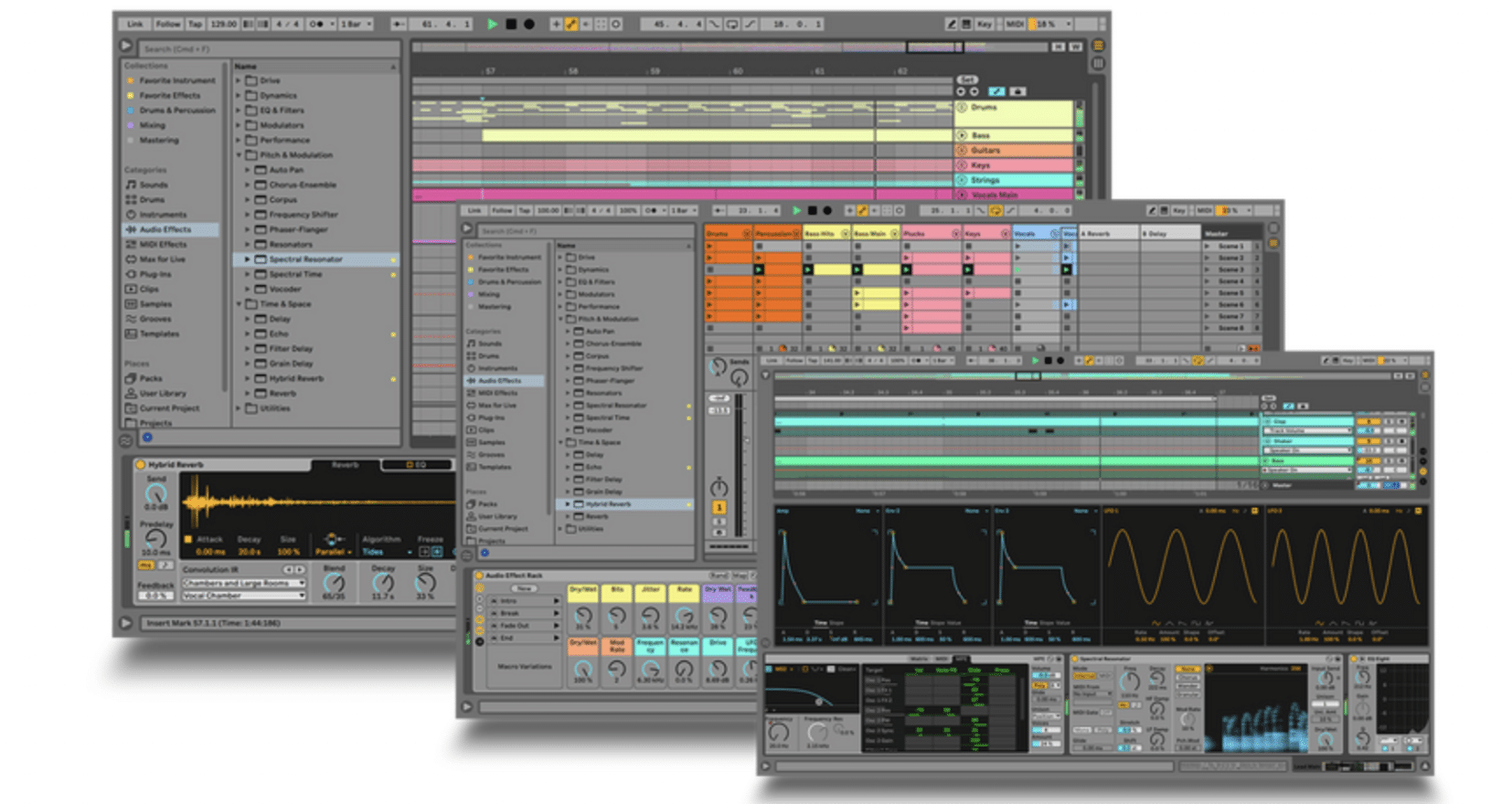
Industry-standard DAWs, like Pro Tools or Ableton Live, offer high-end features like elastic audio and advanced MIDI manipulation.
Pairing these with a powerful audio interface with low-latency monitoring can drastically improve workflow.
High-quality, multi-pattern microphones offer versatility 一 whether recording vocals or acoustic instruments (like a guitar).
Invest in mics with a flat frequency response for more natural sound reproduction.
Also, don’t overlook the potential of control surfaces with motorized faders for hands-on mixing.
Many of these are modular and can be tailored to fit individual workflow needs.
Therefore providing tactile control over your digital audio workstation.
-
FL Studio Mobile: The Producer’s Best Friend
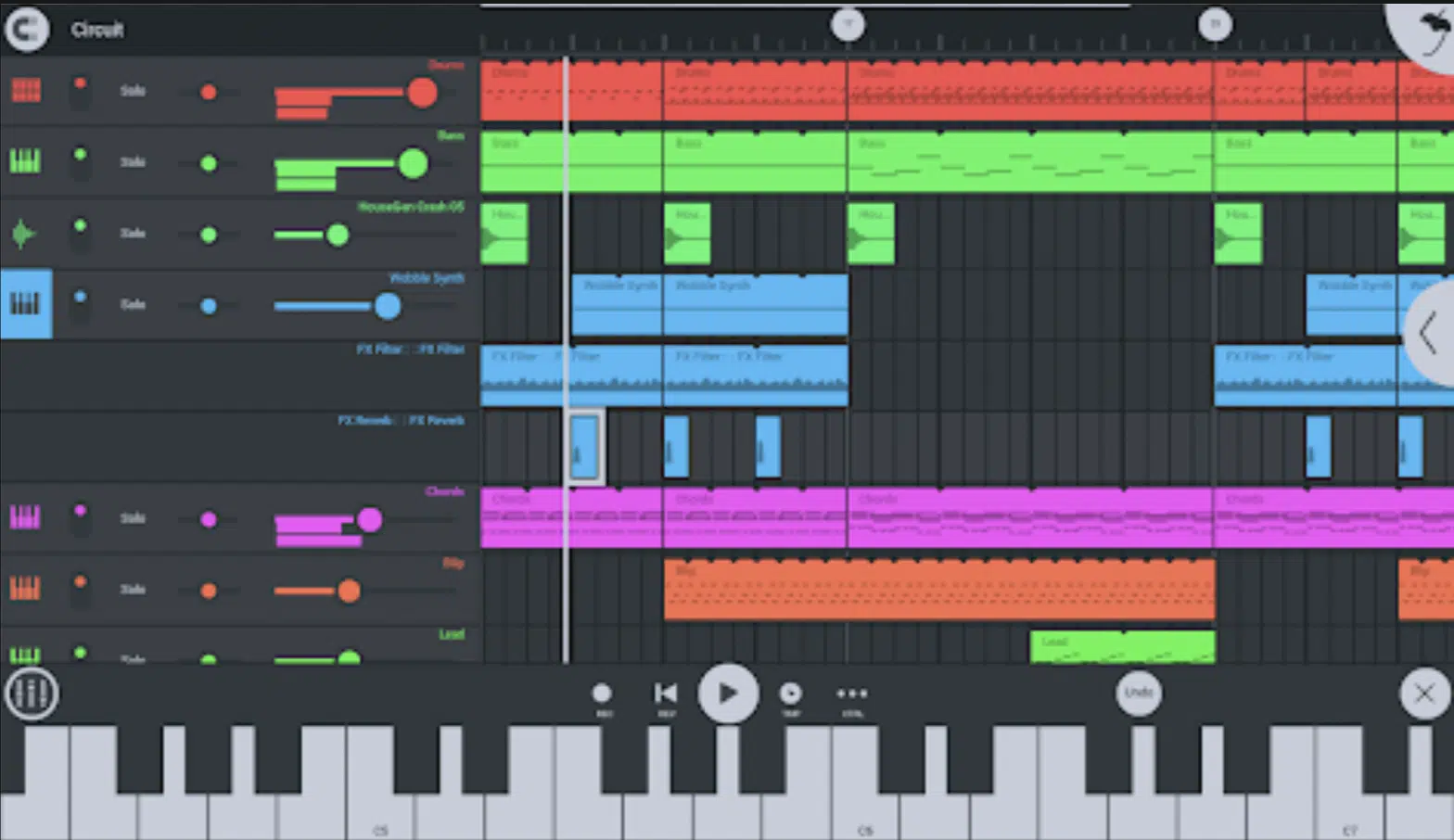
Beyond traditional music studio setups, FL Studio Mobile offers an on-the-go solution without sacrificing much in the way of advanced features.
Utilize its high-quality:
With FL Studio Mobile, you can create fire beats or enchanting melodies on the fly.
Advanced editing can be done using the step sequencer or recording live instruments (like a guitar or drums) directly into the software.
The sequencer offers control over individual note parameters.
This provides a granular level of editing typically reserved for desktop DAWs.
Essentially, it can teach you more than actual teachers.
To improve efficiency, consider using FL Studio Mobile as a sketchpad for ideas that can be later elaborated with a more robust setup.
FL Studio projects can be exported into formats that are compatible with desktop versions of the music production software.
This ensures a seamless transition between mobile and music studio work.
The Recording Session Process
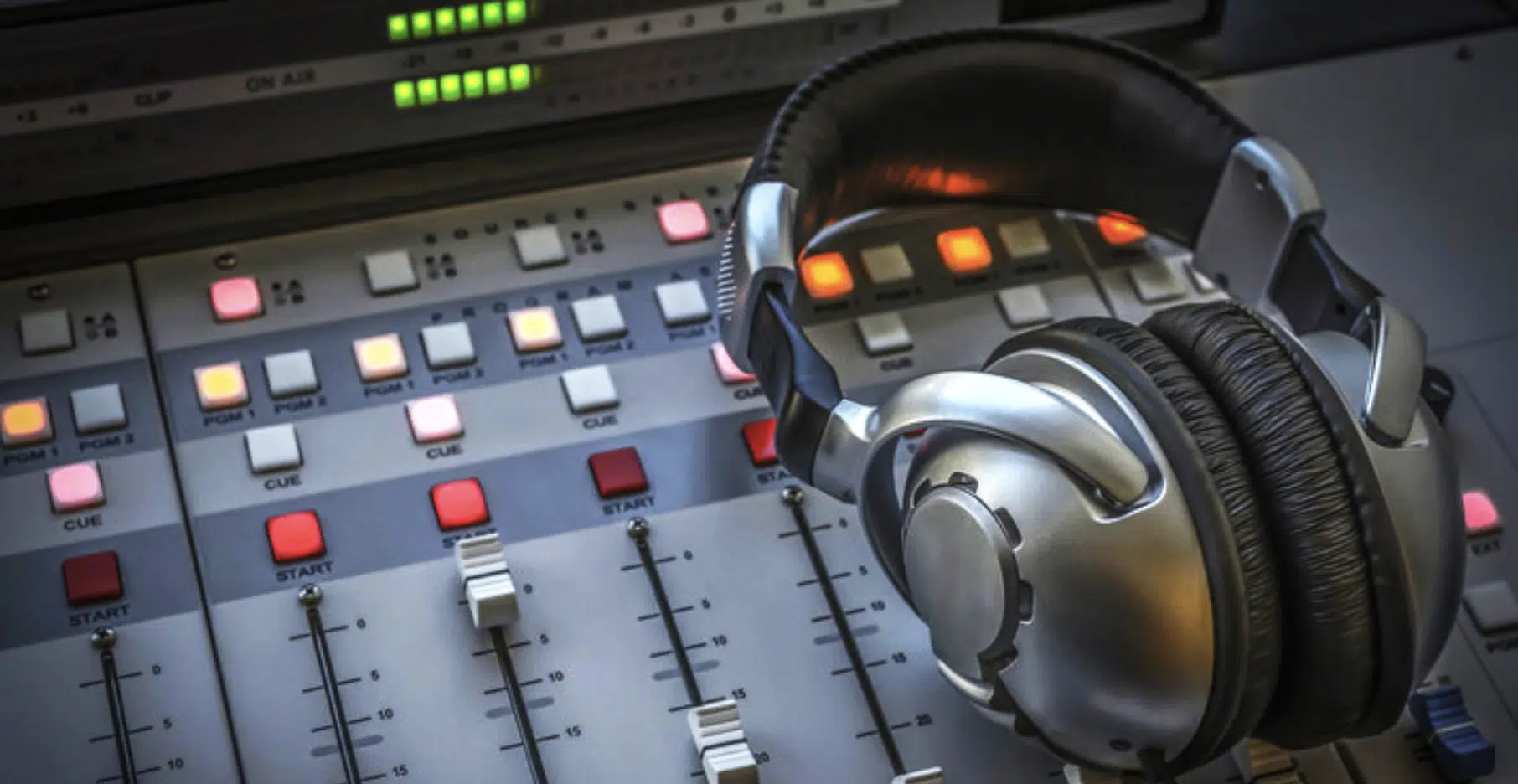
The cornerstone of any professional recording session in a music studio is pre-production.
Draft a clear, moment-to-moment roadmap with annotated sheet music or tablature and a click track that can be shared with all musicians and engineers beforehand.
During the session, you’re not just hitting “record.”
Ensure to include techniques like phase-aligned multi-mic setups on drum kits to capture a more nuanced, wide-open sound.
Always keep an eye on headroom 一 aiming for the highest quality recording without digital clipping.
Use pre-amps to boost signals at the recording stage.
This can contribute to a “warm” and “bigger” sound that is more harmonically rich.
-
Best Recording Software and Tools
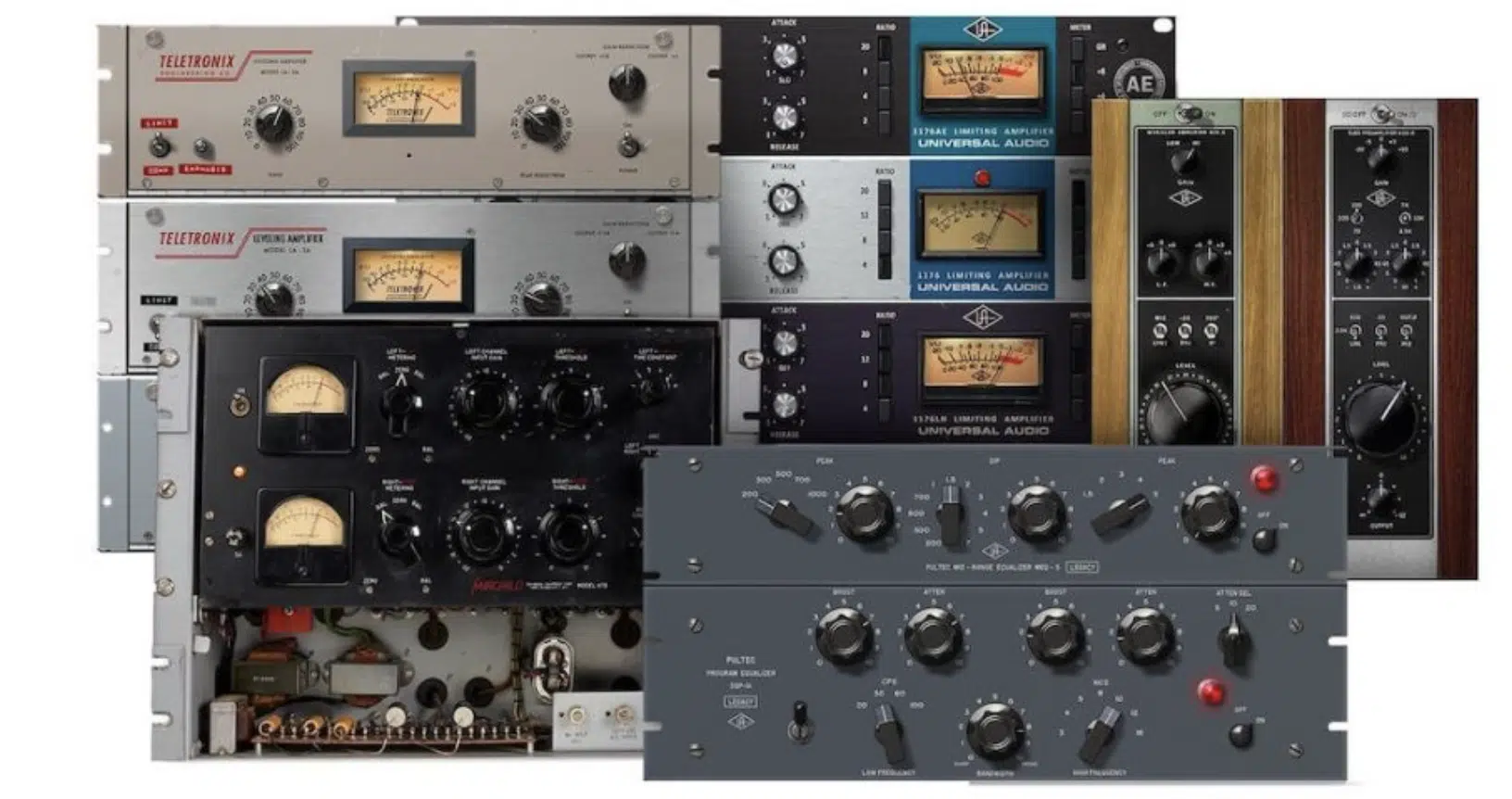
The recording software and tools must be up to par with your skills.
For example, UAD plugins (Universal Audio) emulate classic hardware down to the circuit level, which is amazing.
.
These unique and innovative plugins offer an analog feel in a digital realm.
Dynamic range is often overlooked…
High-end compressors and limiters can help maintain consistent yet dynamic sounds, especially when playing complex arrangements with multiple instruments.
Consider automation in the recording stage of your song, not just mixing.
Certain techniques can bring out special performances in the recording itself, like:
For example, automating a high-pass filter during a build-up can create anticipation.
This will drive the listener into the highly-anticipated drop.
Real-time reverb or delay adjustments can add depth and space to your vocals 一 making each phrase more dynamic and emotionally charged.
Regardless of the genre in which you produce (like rock, pop, hip-hop, etc.) these techniques are vital.
-
Recording Vocals: Vocal Tuning Secrets

Advanced vocal recording often employs tube or ribbon microphones for a uniquely textured sound profile.
However, the recording is just the first step; detailed post-production can transform a good vocal track into a great one.
Remember, Melodyne and Auto-Tune are more than just pitch-correction tools.
They can tighten performances subtly without sacrificing the emotive nuances in vocal delivery.
The technique of “comping” takes multiple takes of a vocal line and compiles them into a single, best-version track.
This can be particularly useful for capturing the best of different takes, like:
- The emotional delivery
- Tone
- Pitch
Remember that it will play out slightly differently every time you record.
So, getting the best of each is super beneficial.
Demystifying Virtual Instruments
Virtual instruments are more than just a convenience 一 they’re a powerhouse in which to create legendary sounds.
Let’s explore why they are essential and how to master their use.
-
Why Virtual Instruments Are Essential
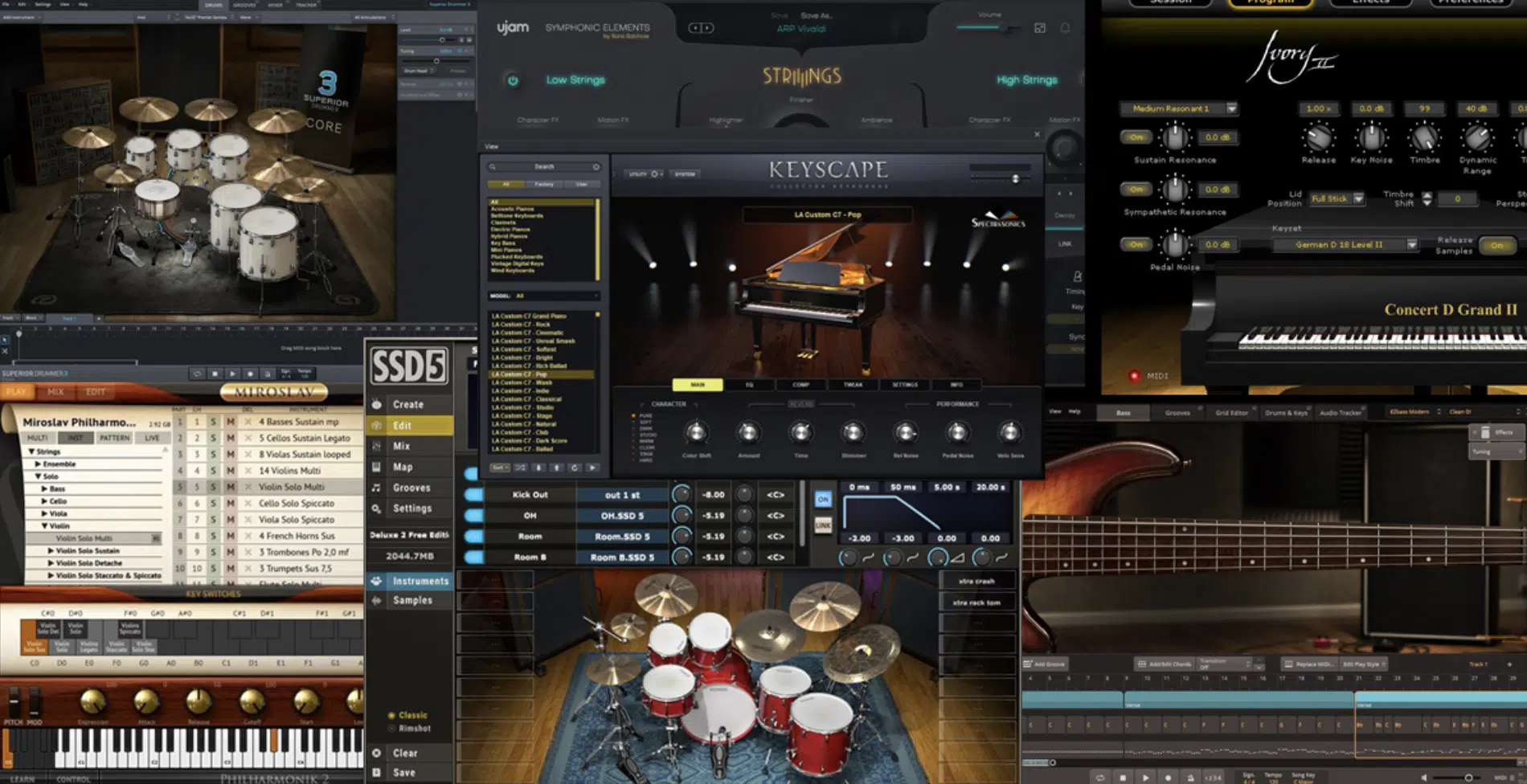
Virtual instruments offer an unparalleled level of control and precise manipulation of:
- Individual notes
- Articulation
- Dynamics
This allows for a creative level of detail that would be incredibly labor-intensive to achieve with live instrumentation.
High-end virtual instruments use advanced sampling techniques that faithfully reproduce the sound of acoustic instruments.
This means you can incorporate a full orchestra or a vintage synthesizer into your project.
Without the logistical challenges or high costs, mind you.
Using virtual instruments can also speed up the creative process.
With templates and presets, you can quickly sketch out complex arrangements 一 leaving more time for experimentation and fine-tuning.
-
Integrating Virtual Instruments with Loops
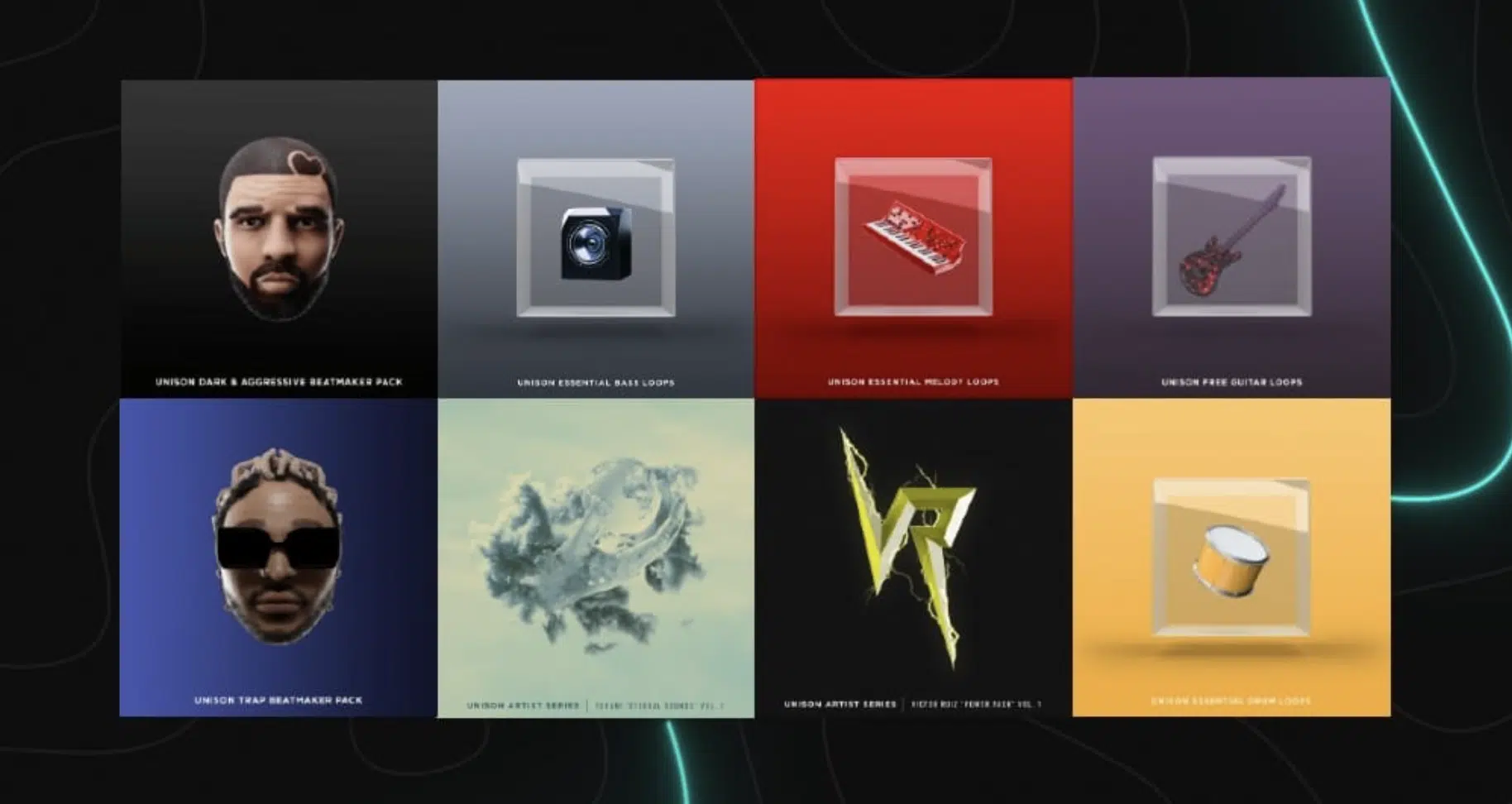
Loops (whether it’s drum loops, guitar loops, or piano loops) can be used to add texture and complexity to your favorite songs without manually programming every part.
The key is to match the tempo and key of your virtual instruments with that of the loop for a seamless blend.
Many virtual instruments come with loop libraries that can be integrated into your next track.
This offers a cohesive sound palette while still allowing for individualized customization.
Also, automation can be your best friend when integrating loops.
By automating parameters (like volume, panning, or effects sends), loops can evolve over time 一 avoiding a static, repetitive feel.
Meaning your tracks will shine, and your listeners will be totally addicted.
Speaking of loops, we’ve got you covered if you’re looking for the hottest melody, drum, bass, or guitar loops.
Mixing and Mastering Your Songs
Now that you’ve got a handle on the recording process and virtual instruments, let’s dive into the world of mixing and mastering to make those songs shine.
-
The Joy & Challenges of Mixing
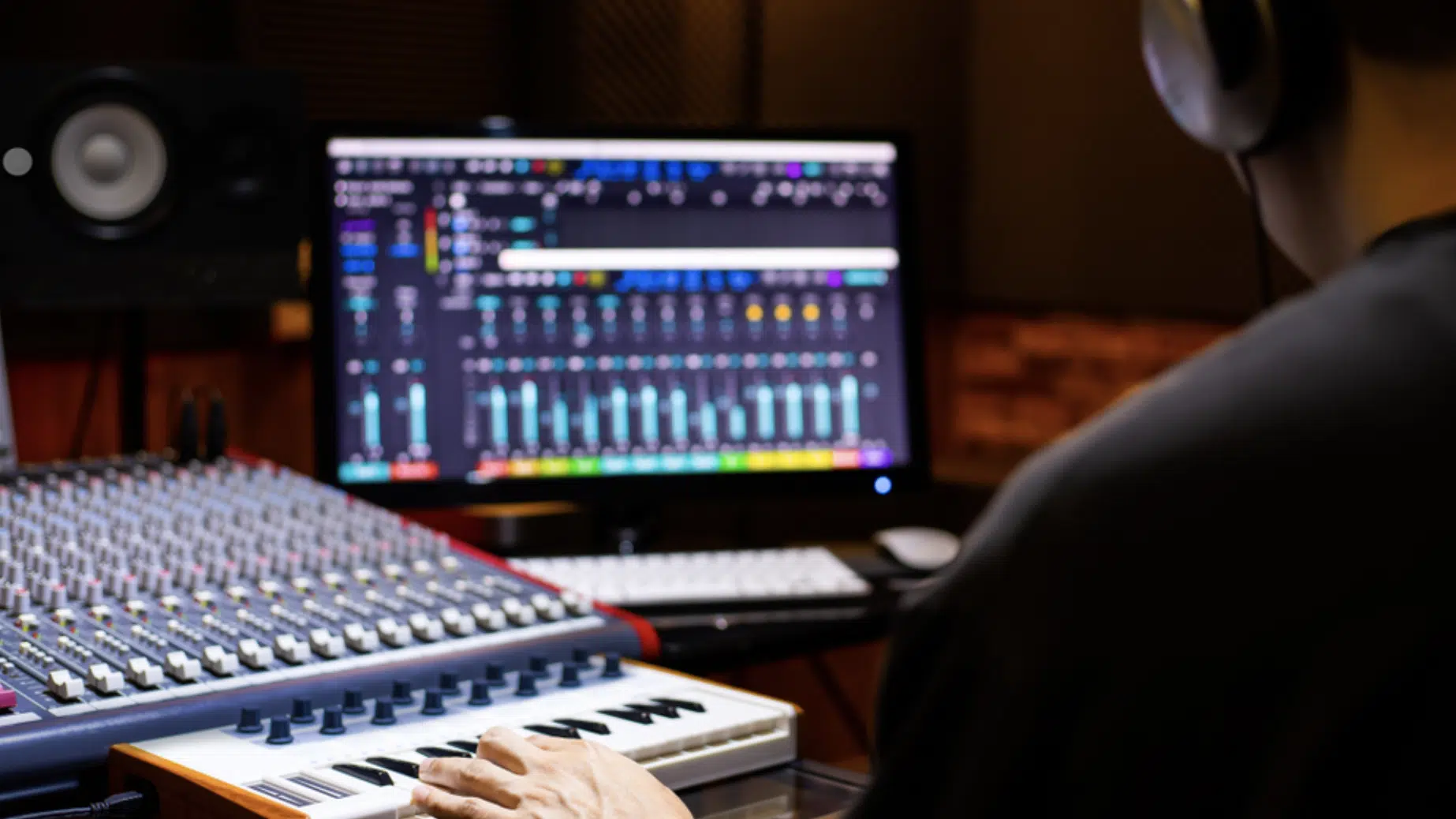
Mixing is where individual elements coalesce into a harmonious whole.
Attention to stereo imaging is crucial here, so make sure to use:
- Panning
- Delay
- Phasing effects
They can help you to widen the stereo field and add depth to your mix.
Dynamic processing, such as compression and gating, can tighten up your tracks and make them more consistent.
NOTE: Overcompression can suck the life out of your mix, so use these tools cautiously.
EQ is another area where subtlety is key.
A skilled producer will carve out frequency “pockets” for each instrument, avoiding muddiness and frequency clashes.
Think of it as sonic real estate 一 each instrument should have its own “property” in the frequency spectrum.
This practice enhances clarity and ensures that each element in your mix can be distinctly heard, contributing to a professional sound.
-
Mastering: The Final Touch
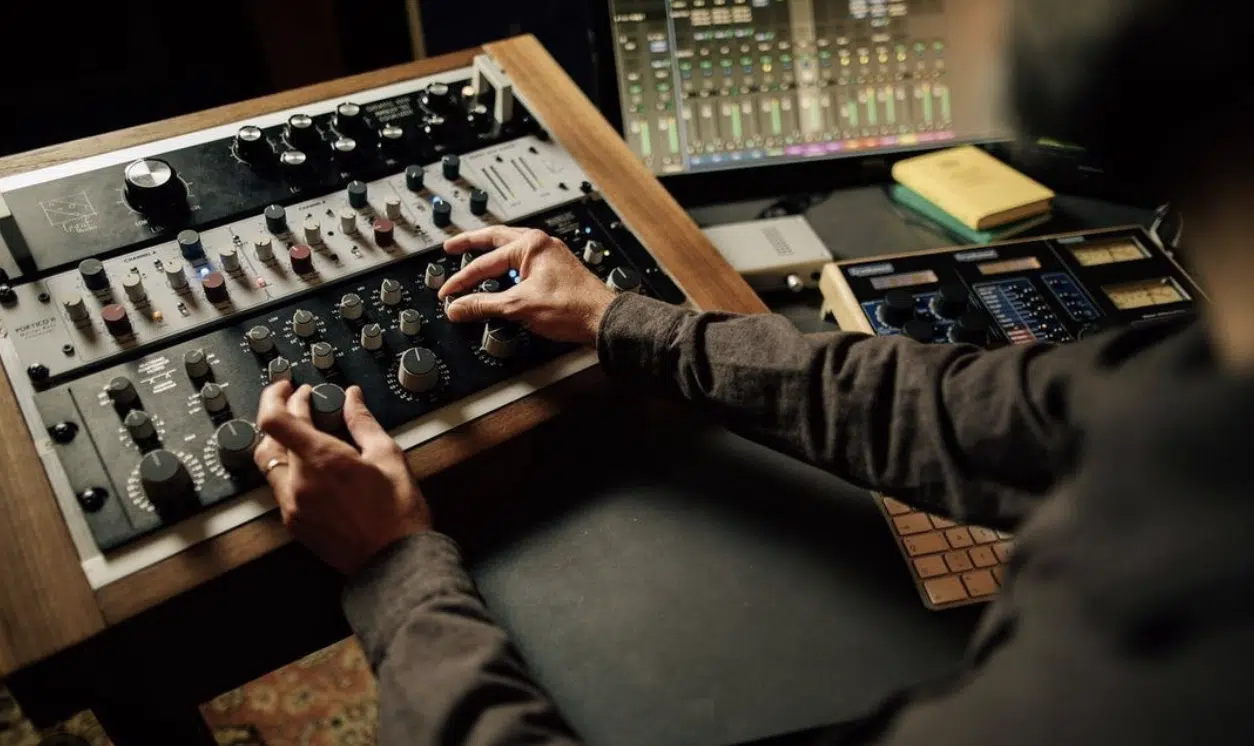
Mastering is often seen as a mysterious art, but it’s the final polish.
Tools like multiband compressors and spectral analyzers can provide additional control and refinement.
Limiting is a commonly used mastering technique to raise the overall level of a track without clipping.
However, the use of dynamic range should be mindful to preserve the musicality and emotion of the track.
Metering tools can offer a visual representation of your:
- Audio levels/sounds
- Stereo spread
- Frequency distribution
This can help in making informed decisions during the mastering process.
Your songs will be polished beyond belief once you get familiar with these different tools and techniques.
-
Mixing Tools & Techniques
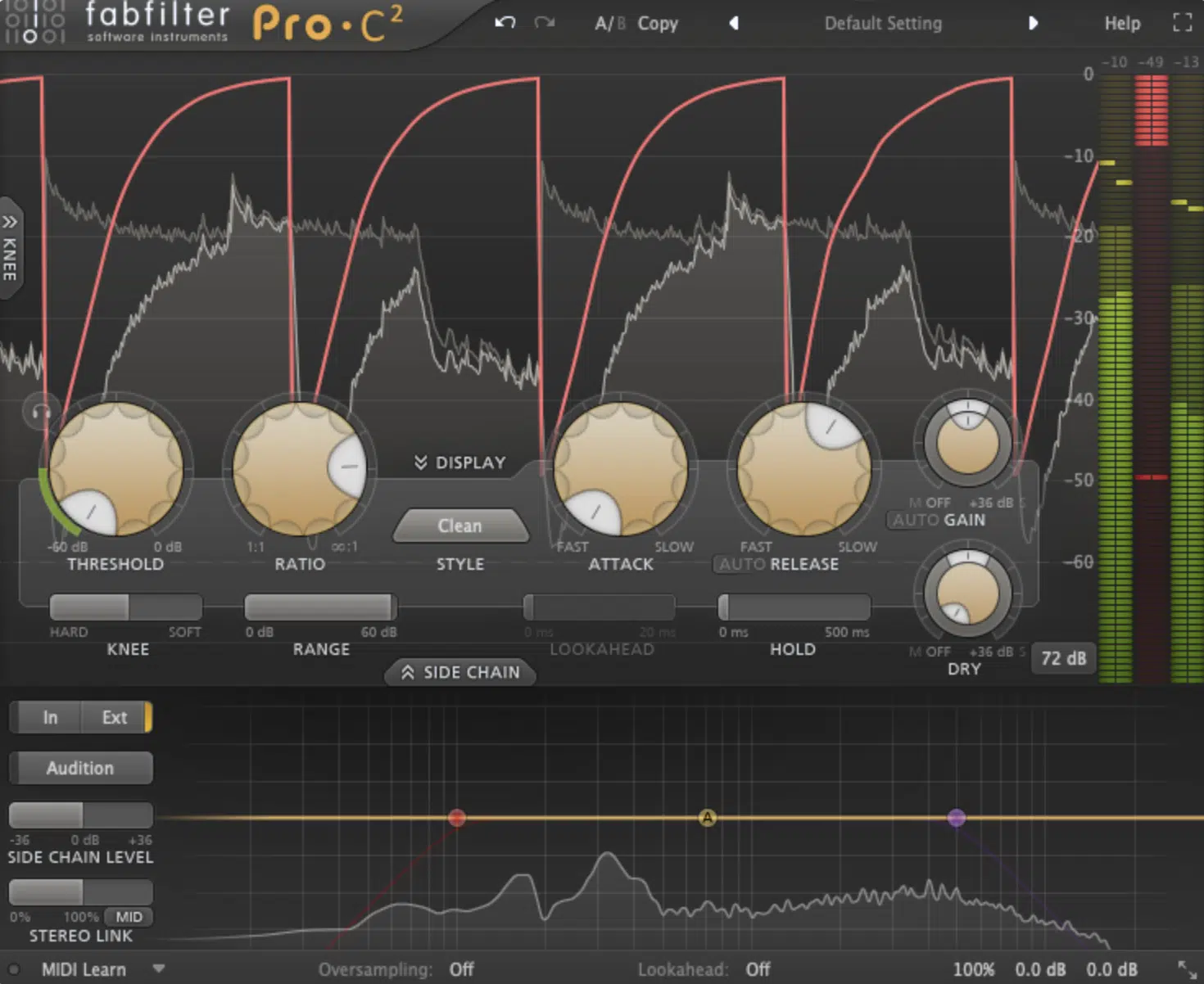
Mixing tools and techniques are crucial to producing a professional-sounding mix/song.
Side-chain compression is an advanced technique that allows one instrument to dictate the compression of another.
For example, this can synchronize the rhythm between a kick drum and a bassline.
M/S (Mid/Side) processing is another high-level technique allowing separate treatment of a signal’s mono and stereo parts.
This can provide a cleaner and more defined stereo image.
Automation in mixing is oftentimes underestimated, but it certainly shouldn’t be.
Dynamic changes in effects parameters can add motion and interest, making sure your mix sounds more engaging to the listener.
Convolution reverb can replicate the acoustic characteristics of real spaces for those keen on experimenting.
This adds an extra layer of realism or otherworldly texture to a mix.
Learning & Growing: Why Music School and Lessons Matter
Becoming proficient at music production doesn’t happen overnight 一 it’s a journey that benefits from structured learning and professional networking.
-
The Pros/Cons of Being Self-Taught vs. Music School
The age-old debate of “self-taught vs. music school” is still ongoing, so let’s discuss the pros and cons of each.
Being Self-Taught
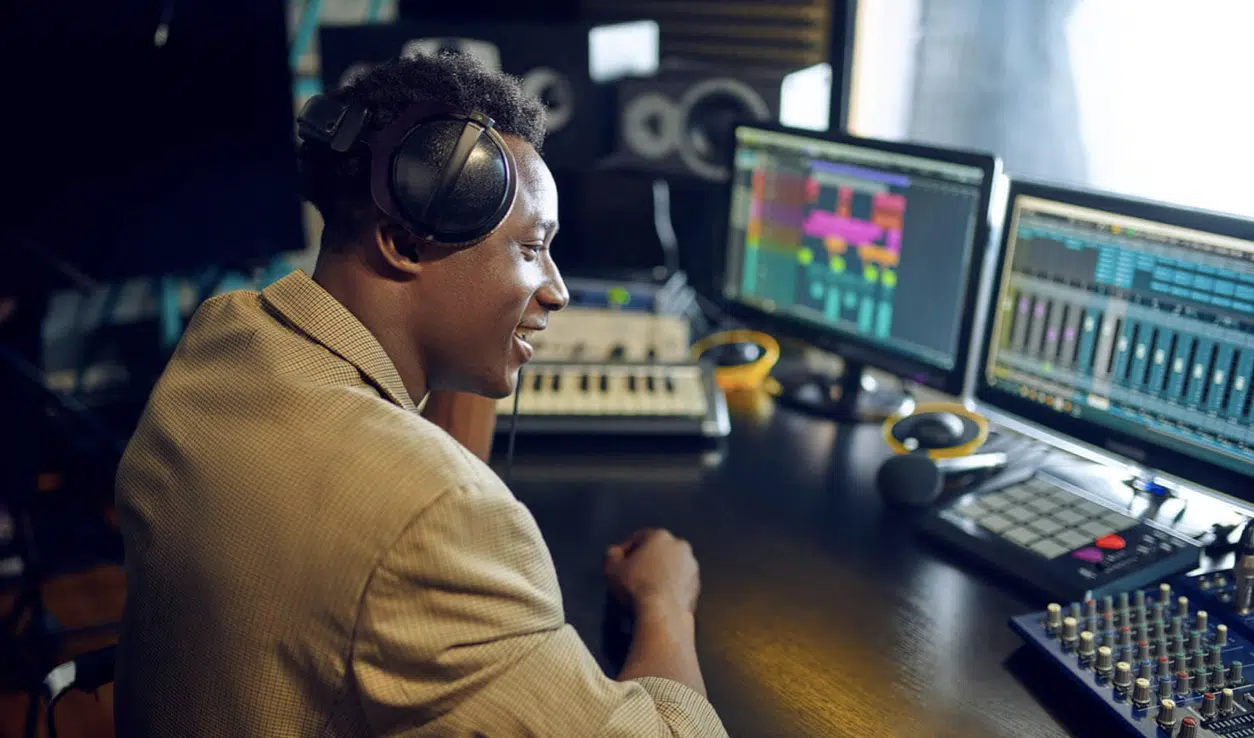
Being self-taught offers great freedom and allows you to explore areas you’re truly passionate about.
However, this approach may lead to gaps in foundational knowledge 一 limiting the understanding of complex concepts later on.
Music Schools
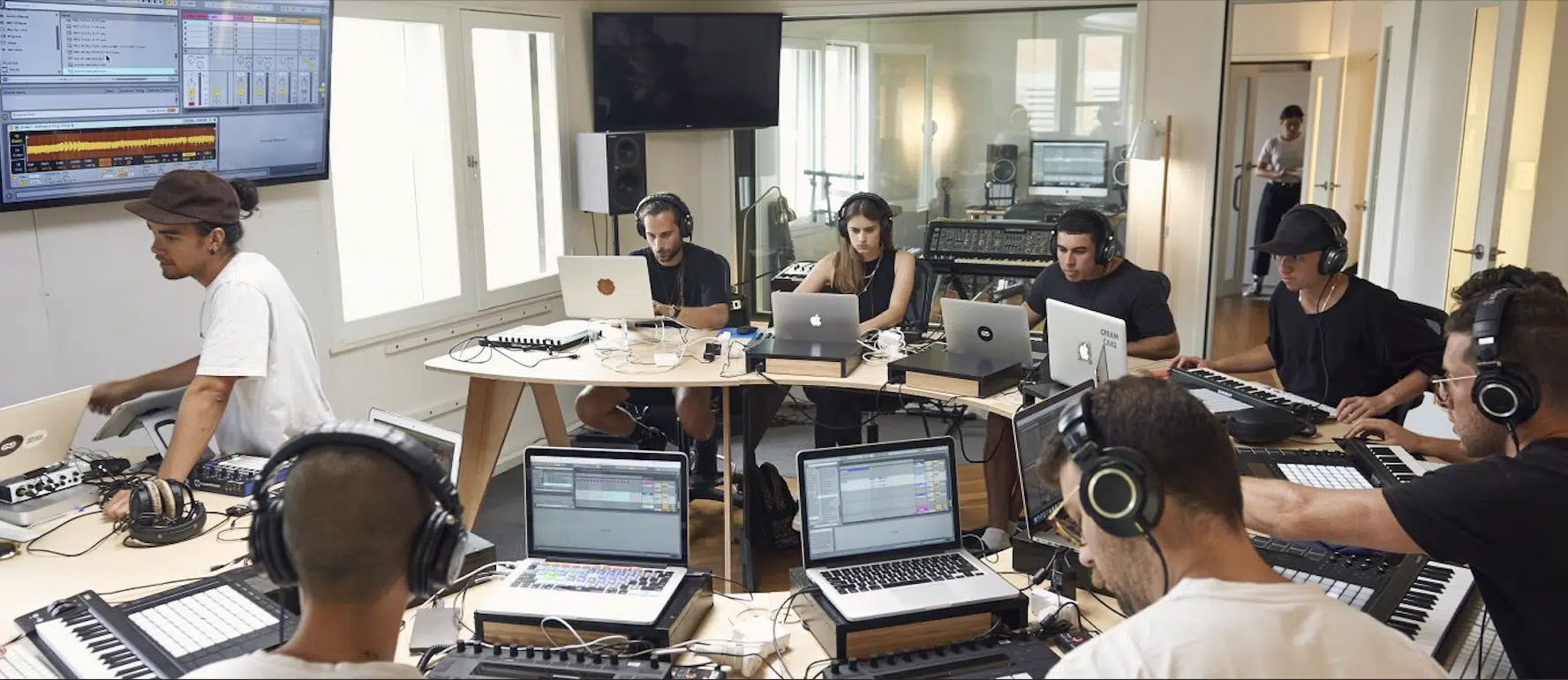
Music schools offer a structured lesson plan for students that cover the technical/theoretical aspects of music productions, sounds, the foundation of your song, etc.
The downside is the significant financial and time commitment that a program often requires.
A blend of formal education and self-driven learning can offer a more balanced skill set.
- Specialized courses or workshops 一 Can fill in the gaps left by self-taught methods.
- Personal projects 一 Can apply the techniques learned in a formal setting.
Moreover, workshops and specialized courses often provide exclusive insights and advanced techniques that aren’t readily available through self-learning.
Conversely, personal projects allow you to discover and play around with your unique style.
As well as practice and refine the skills you’ve acquired in a classroom.
Personally, I recommend a combination of both to ensure the best of both worlds.
-
The Role of Teachers & Lessons
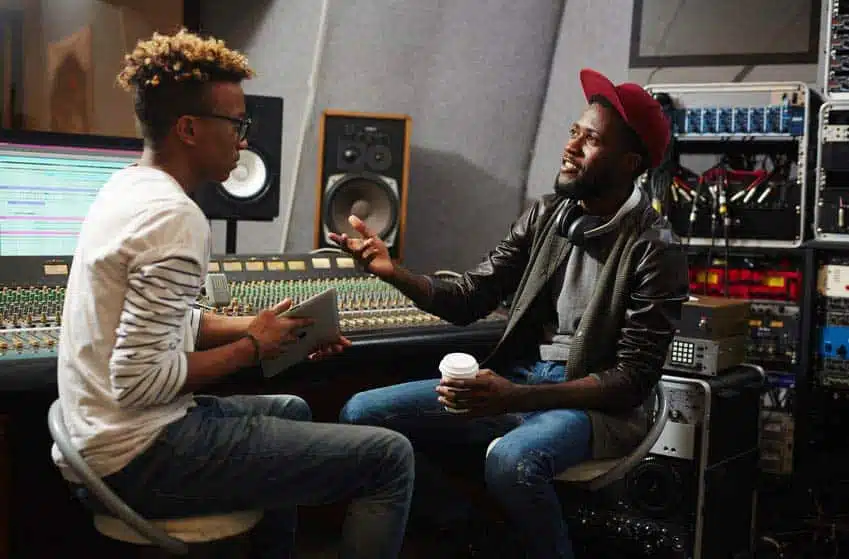
A good instructor can offer personalized feedback that’s difficult to obtain elsewhere.
Their music studio expertise can identify/hear weaknesses in your work that you might not notice, facilitating more rapid improvement.
Online lessons, courses, programs, and music studio masterclasses have made it easier than ever to gain specialized knowledge.
Platforms like MasterClass and Berklee Online offer high-quality instruction and video(s) from industry professionals at a fraction of the cost of traditional schools.
The value of lessons extends beyond mere skill acquisition and wild dreams.
They offer access to networking opportunities and can sometimes provide direct pathways and details to internships or job offers within the industry.
-
Networking 101: Why It’s So Important
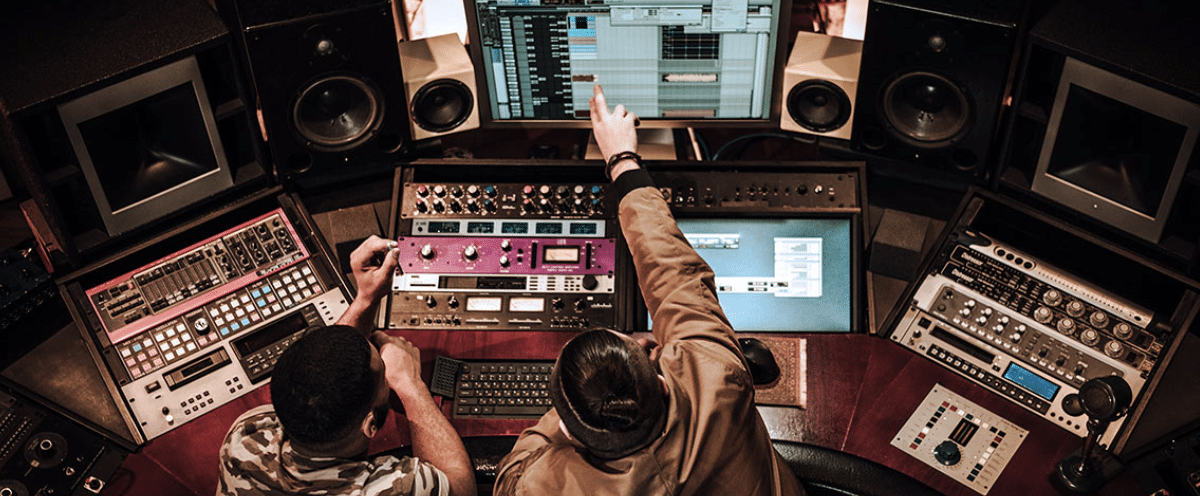
Networking, whether in a music studio or outside a music studio, is often overlooked but can be as vital as your production skills.
Building relationships within the industry can provide collaborative opportunities and even potential job offers.
It’s beneficial for beginners and pros alike.
Social media platforms like LinkedIn and industry-specific forums offer valuable networking channels.
Regular participation (even when challenging) can elevate your profile and secure a special place within the community.
You can acquire more organic opportunities by attending:
- Industry events
- Workshops
- Online seminars
Face-to-face interactions are often more fun/impactful and can lead to lasting professional relationships.
The key is to get your name out there and your music the attention it deserves, so the more exposure, the better.
This way, your friends, children, kids, and loved ones won’t be the only ones to hear your voice.
Music Studio: Final Thoughts
Your music studio is your sanctuary, and ensuring you’ve got all the nuances down to a T is vital.
It will help you create the hottest tracks that capture your listeners’ attention and leave them wanting more.
From the arrangement of your home studio to vocal tuning secrets and mixing masterclasses, there’s a wealth of knowledge to tap into for elevating your music production game.
And, because I know how crucial it is to have quality resources at your fingertips, let me drop something special your way.
The Beatmaker Box (Free Teaser) Pack is an amazing asset to have in your studio arsenal.
It includes 18 loops, fully loaded with audio stems & MIDI, that can take your beats to the next level.
And the best part?… It’s free of charge and 100% royalty-free.
Incorporate these loops into your next track and experience the difference quality sounds can make.
After all, every tool, lesson, and tip discussed in this article can only be elevated by using exceptional raw materials.
So dive into these various aspects and make your music studio a powerhouse of creativity and technical prowess.
Your tracks will thank you.
Until next time…







Leave a Reply
You must belogged in to post a comment.